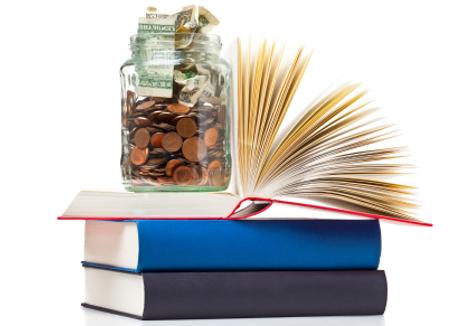The back-to-school ritual has become expensive for families across the country today. While “public” education tends to imply free schooling, that is no longer the case for many cash-strapped school districts. Before you send your kids off to the hallowed halls of their neighborhood schools, check out how much that public school might set your checkbook back.
Mandatory Fees Add Up Quickly
Mandatory fees may encompass everything from textbook fees to the cost of technology. Although the ACLU takes the consistent stand that requiring fees for public education is illegal, the practice is becoming widespread as school districts grapple with budget cuts. According to NBC News, the cost of those mandatory fees can vary widely, from $20 or $40 a student to hundreds per student in some districts.
Gawker recently published a report that included a copy of a fee slip from a high school in Park Ridge, Illinois. The slip shows fees totaling nearly $600, with $300 for a required Chromebook that students must purchase even if they have their laptop or tablet at home. The slip also listed generic “10th Grade Fees” at $114 and several smaller fees for textbooks and a yearbook.
This video from the Cato Institute examines the true cost of public education.
Extracurricular Activities Don’t Come Cheap
Clubs and sports are another area when many parents feel the stab in their pocketbooks. NBC News reported that one mother in Rockwall, Texas, is paying $400 per year for her daughter to join the marching band in her high school. The network also cites a school district in Huber Heights, Ohio, that was receiving parental outrage when it tried to increase the fee for student athletics from $225 to $750. The district finally compromised and raised the fee to $428 instead.
U.S. News and World Report published an article about another family that had to talk to their high school student about choosing extracurricular activities carefully because of the cost. The student was already involved in the drama program, which was costing the family in terms of production costs for the school plays and travel expenses for a thespian group competition. When the daughter was interested in playing softball, the family wasn’t sure they could afford to add the sport to their schedule or budget.
The Rising Cost of School Supplies
According to USA Today, the average prices for school supplies jumped 7.3% for the new school year. That means parents are paying significantly more to outfit their children in pencils, notebooks, and backpacks than they did this time last year. The numbers, which came from the annual Huntington National Bank Backpack Index, showed a much higher increase than the rate of inflation, which was just 1.8%.
“We’re not sure what’s driving [the increases],” Mark Reitzes, president of the Southern Ohio/Kentucky region for Huntington, told USA Today. “Maybe plastic is more expensive.”
Families will pay an average of $577 on supplies for elementary students this year, which marks a 5.3% increase over last year. Those with middle school students can plan on paying an average of $763, and high school students can expect to spend around $1,223 on supplies. Those figures mark 5.3% and 9.5% increases, respectively.
This video from ZIPPS Media looks at the hidden costs of public education.
“Nickel and Dime-ing” Students
In addition to the big numbers listed above, some parents believe the “nickel and dime-ing” that seems to go on in public schools today is adding up much faster than school districts realize. The fee list published on Gawker showed a variety of smaller fees, including an $ 8-course fee for science and another $8 for a student activity ticket. Add the cost of a P.E. uniform, rental fees for musical instruments, or student planners, and the bottom line goes up fast.
KOB News in New Mexico reports that one school in Albuquerque is now charging students a $6 fee annually to rent a locker in the school. Cibola High School officials told the news station that the additional fee covers expenses the school district does not currently pay, such as the cost of a student ID and the cleaning and maintenance of all the lockers at the school. Ben Schultz, activities director for Cibola High School, told KOB, “We don’t want to waste funds, but at the end of the year, we want to be in the black, not the red.”
No Free Ride
Even bus service has become a pricey proposition for students in many school districts nationwide. In another effort to balance budgets, many districts are now moving the cost of bussing students to and from school to the students and their families. For some, the cost may be nominal. For example, the fee list on Gawker includes a fee of $8.50 for a bus pass. In other districts, the cost may be hundreds of dollars, leading some families to look for other ways to get their kids to school and home daily.
In addition to the daily bus costs, students who embark on a field trip may have to pay an additional fee to ride a bus to their destination. In some countries, costs may range between $5 and $15 per trip, adding to the price tag of trips to museums, zoos, and other educational sites.
Public education may still be open to all, but it is far from free. With a myriad of fees and hidden costs, parents may suffer serious sticker shock throughout the year.
Questions? Contact us on Facebook. @publicschoolreview












